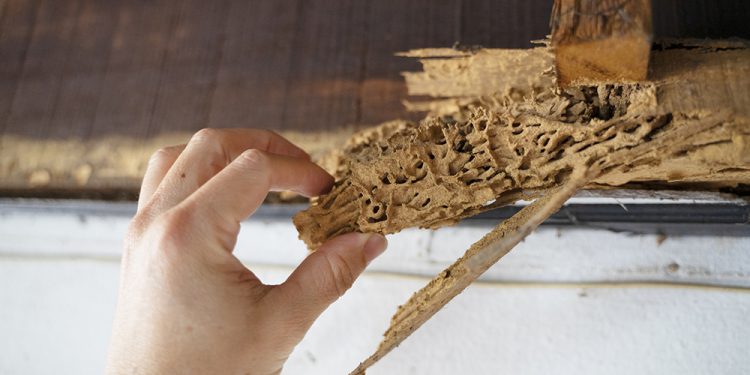Coverage questions arise when damage is found
Although the failure to disclose occurred while
the seller was the insured owner of the property,
the court agreed with the insurance company that failure
to disclose in itself does not constitute an
“occurrence” that would trigger coverage for property damage liability.
By Joseph S. Harrington, CPCU
If you or one of your clients is looking to sell a home, a recent court ruling in Alabama should remind you of a potential pitfall.
In that case, a U.S. district court held that an insured under a homeowners policy may have no defense costs coverage for a claim alleging that the policyholder failed to disclose a termite infestation before selling the insured home. Physical damage by the termites occurred or was discovered after ownership had passed to the buyer.
Although the failure to disclose occurred while the seller was the insured owner of the property, the court agreed with the insurance company that failure to disclose in itself does not constitute an “occurrence” that would trigger coverage for property damage liability. In other words, the damage did not result from the failure to provide notice, but from termite activity.
Under that reasoning, the court concluded that the allegation against the defendant had not been established as a covered claim. Hence, the insurer was not bound to provide coverage for defense costs, at least not yet. (The case is still under consideration, and the insurer may ultimately be liable for the costs of defense and indemnity if the trial determines that the allegation is a covered claim.)
Responsibility
Like most cases involving sales of real property, this recent case centers on the degree to which property owners are responsible for identifying and disclosing defects or impending damage before completing a sale.
While it is illegal in every state to conceal known defects or otherwise mislead buyers, the extent of the duty to investigate for potential defects varies among jurisdictions. In Illinois, to cite one example, home sellers are required to provide buyers with a state-mandated checklist indicating whether certain common defects are present and describing those that are present.
The ruling in Alabama follows a prevailing trend in holding that, in the absence of specific statutory or contractual obligations, failure to disclose property conditions fully or accurately creates an economic loss not covered by general liability insurance. That approach is not universal, however. Some courts have found that undiscovered conditions that later cause physical damage (water leaks, for example) may constitute property damage for the purpose of liability insurance coverage.
Under the latter approach, there are various legal doctrines for determining the timing of the occurrence and, therefore, which policy should respond.
Under the “exposure” and “injury in fact” doctrines, an occurrence is deemed to have taken place when the property is first exposed to damage or when damage actually occurs; coverage is triggered under the liability policies in place at those times. Under the “manifestation rule,” the occurrence is determined to be at the time the damage first becomes apparent; coverage falls to the policy then in effect.
“Double,” “triple,” or “continuous” trigger rules respond to combinations of the triggers described above, potentially increasing the number of policies that may be called to respond to a claim.
First party
In rare circumstances, a home seller may be able to claim first-party property coverage for damage to a home it has sold.
Property insurance is not considered to have much of a “tail;” i.e., a period when a loss has occurred but the existence or extent of is not fully known. Nonetheless, it is theoretically possible to claim building property coverage for damage to a dwelling one has sold and no longer insures.
For that to happen, however, several conditions need to be in place:
- A covered peril must be the proximate cause of the damage;
- The damage cannot be subject to another exclusion (insects, infestations, etc.);
- The damage has to have occurred during a period when the seller had coverage in effect;
- For vandalism-related losses, the dwelling cannot have been vacant for more than the time specified in the policy (typically 60 days);
- The damage must be reported within the time period specified in the policy; and
- Legal action by the insured must be initiated within the time period specified in the policy (typically two years after the date of the loss).
In short, the only possibility for first-party coverage for damage to a residence that’s been sold is if the damage is discovered shortly after the sale and the seller can establish that it resulted from a covered peril during the policy period.
Home sellers and their risk counselors need to be aware that, in most cases, they cannot rely on their homeowners insurance to compensate them for damage discovered after a home is sold. Caveat venditor. Seller beware.
The author
Joseph S. Harrington, CPCU, is an independent business writer specializing in property and casualty insurance coverages and operations. For 21 years, Joe was the communications director for the American Association of Insurance Services (AAIS), a P-C advisory organization. Prior to that, Joe worked in journalism and as a reporter and editor in financial services.






